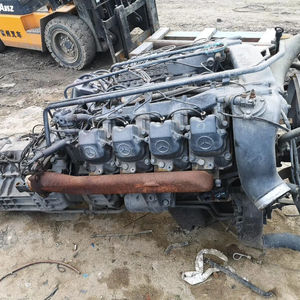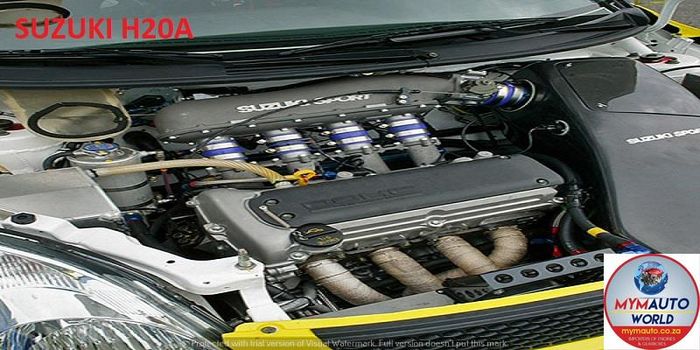Locating the very best Deals on Opel Corsa Engine Parts
Locating the very best Deals on Opel Corsa Engine Parts
Blog Article
Exploring the Inner Operation of a Compact Vehicle's Engine System
As motorists, we typically take for approved the elaborate processes that take place within the confines of our lorry's engine system. In this exploration of a compact lorry's engine system, we will unravel the internal workings of this mechanical harmony, shedding light on the enigmas that drive us ahead on our everyday trips.
Burning Refine Overview
The burning procedure in a portable vehicle's engine system is a vital device that effectively converts gas right into energy to power the vehicle. This procedure occurs within the burning chamber of the engine, where fuel and air mix, spark, and produce controlled surges. The burning process includes four major phases: intake, power, exhaust, and compression.
Throughout the consumption stage, the piston relocates downward, drawing in a mixture of air and fuel into the burning chamber. The next phase, compression, involves the piston relocating upward, pressing the air-fuel combination to enhance its potency. Consequently, in the power stage, the stimulate plug fires up the pressed mix, resulting in a rapid growth of gases that forces the piston back down. This descending motion generates the power required to drive the car. Ultimately, in the exhaust stage, the burnt gases are expelled from the combustion chamber via the exhaust valve, preparing the chamber for the following cycle. This cyclic burning procedure is fundamental to the procedure of a portable vehicle's engine system, making certain efficient energy conversion for propulsion.
Piston and Cyndrical Tube Communication

The piston's specific fit within the cyndrical tube is essential for keeping optimum compression and stopping energy loss during burning. Limited clearances in between the piston and cyndrical tube wall surfaces make sure efficient sealing, permitting the piston to move smoothly without permitting gases to leak past. Correct lubrication is additionally crucial to decrease rubbing and use between these components, enhancing long life and performance.
Furthermore, the layout and materials made use of in producing the piston and cylinder influence engine effectiveness and durability. Modern engines commonly use lightweight yet durable materials like aluminum alloys for pistons and cyndrical tube liners to lower inertia and boost thermal efficiency. In general, the unified communication between the piston and cyndrical tube is basic to the engine's capability and overall efficiency.
Fuel Shot System Functionality
Fuel shot systems in compact automobile engines play a critical function in specifically delivering gas to the burning chamber for regulated and effective ignition. The gas injection system works by injecting fuel into the burning chamber at the optimum minute during the engine's procedure go to this website (opel corsa engine). This specific timing guarantees that the gas blends equally with the air for proper burning, leading to enhanced gas performance and reduced emissions
There are mainly 2 types of fuel injection systems used in small automobile engines: port gas shot (PFI) and direct gas shot (DFI) PFI systems infuse gas right into the consumption port prior to the consumption valve, while DFI systems infuse gas straight right into the burning chamber. Both systems have their benefits, with DFI using far better fuel atomization and PFI supplying a much more affordable solution.
Recognizing Engine Cooling Devices
Efficient operation of a small automobile's engine depends heavily on the performance of its cooling mechanisms. Engine air conditioning is vital to avoid overheating, which can lead to serious damages and lowered performance. The cooling system in a portable automobile normally includes a number of components interacting to regulate the engine temperature. One vital part is the radiator, which uses coolant to soak up warm from the engine. As the warm coolant moves via the radiator, it releases heat right into the air, cooling off before going back to the engine. The water pump flows the coolant via the engine and radiator, ensuring a constant flow to manage temperature. Additionally, the thermostat aids regulate the coolant circulation to maintain optimum engine temperature. Some lorries also have cooling followers that activate when additional air conditioning is needed, such as throughout hefty traffic or heat. Understanding these engine air conditioning mechanisms is vital for maintaining the performance and long life of a compact vehicle's engine system.

Exhaust System Parts Explained
The optimum performance of a portable lorry's engine air conditioning devices relies on a complementary system called the exhaust system, which comprises different crucial components for ensuring reliable emissions and engine performance. The exhaust system consists of elements such as the exhaust manifold, catalytic converter, muffler, and tailpipe. The you could try this out exhaust manifold accumulates exhaust gases from the engine's cyndrical tubes and routes them to the Check This Out catalytic converter. The catalytic converter after that converts hazardous contaminants in the exhaust right into less unsafe emissions before launching them via the muffler and tailpipe.
One important element of the exhaust system is the oxygen sensor, which checks the oxygen degrees in the exhaust gases to aid regulate gas usage and ensure optimal engine efficiency. opel corsa engine. In addition, the resonator may be present in some exhaust systems to lower noise levels. On the whole, the exhaust system plays an essential duty in preserving engine performance, reducing dangerous exhausts, and ensuring a quieter driving experience for portable car proprietors

Verdict
In verdict, the small car's engine system is a complicated combination of components that collaborate to help with the burning procedure, transform gas into energy, and get rid of waste gases. Understanding the inner functions of the engine system, including the piston and cylinder interaction, gas shot system, engine cooling mechanisms, and exhaust system elements, is crucial for keeping optimum performance and efficiency of the vehicle.
The burning procedure in a portable automobile's engine system is a critical system that successfully converts gas into power to power the vehicle.Gas shot systems in small lorry engines play a crucial role in exactly supplying fuel to the combustion chamber for reliable and controlled ignition.There are mostly two types of gas shot systems used in compact car engines: port gas shot (PFI) and straight fuel shot (DFI) Comprehending these engine air conditioning systems is vital for keeping the performance and longevity of a small car's engine system.
The optimal functioning of a portable car's engine air conditioning mechanisms depends on a complementary system known as the exhaust system, which comprises different crucial components for guaranteeing effective exhausts and engine efficiency.
Report this page